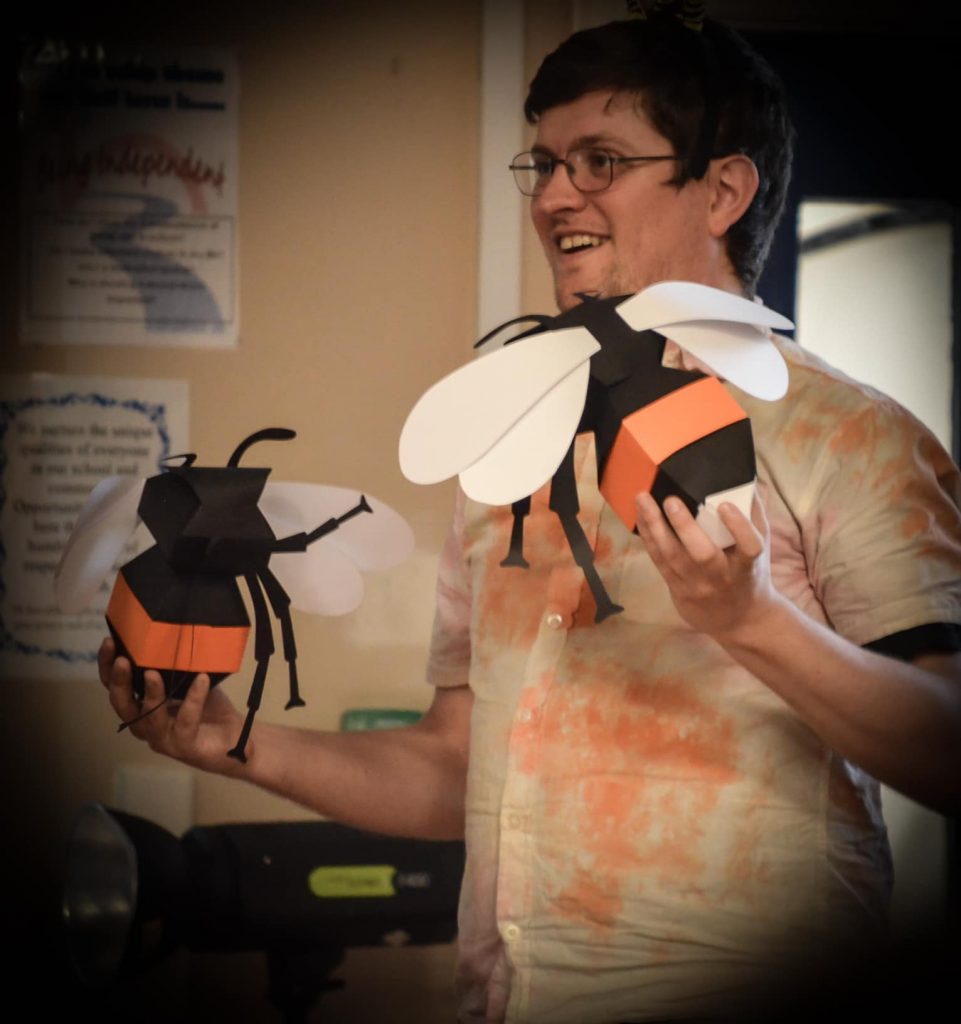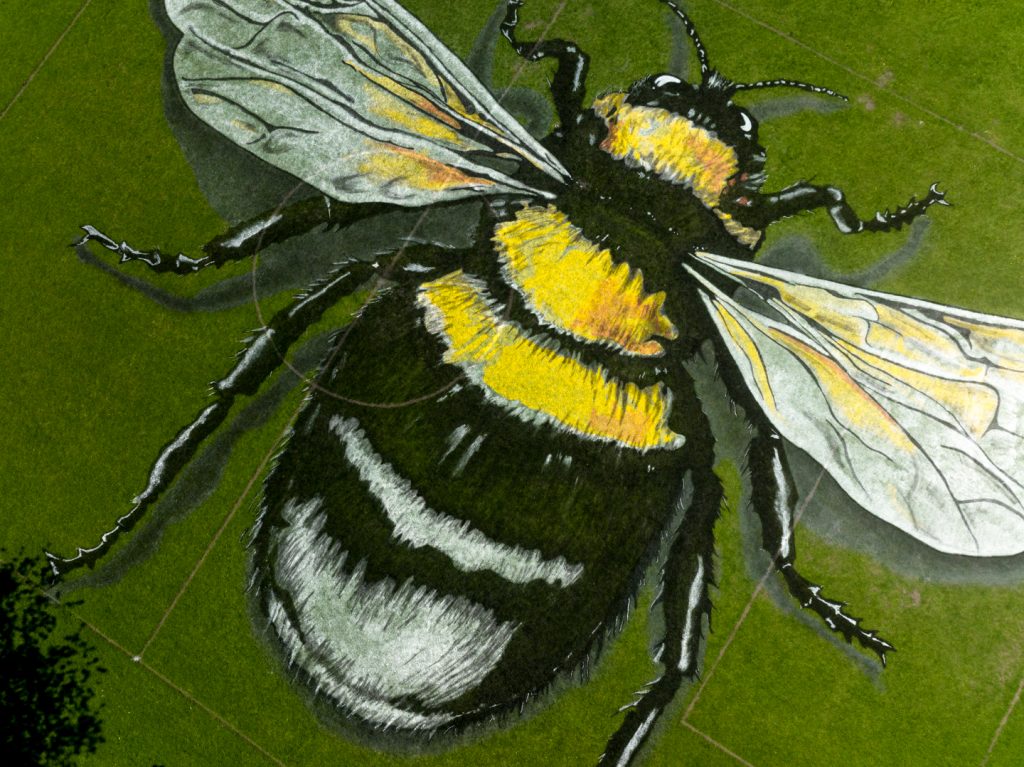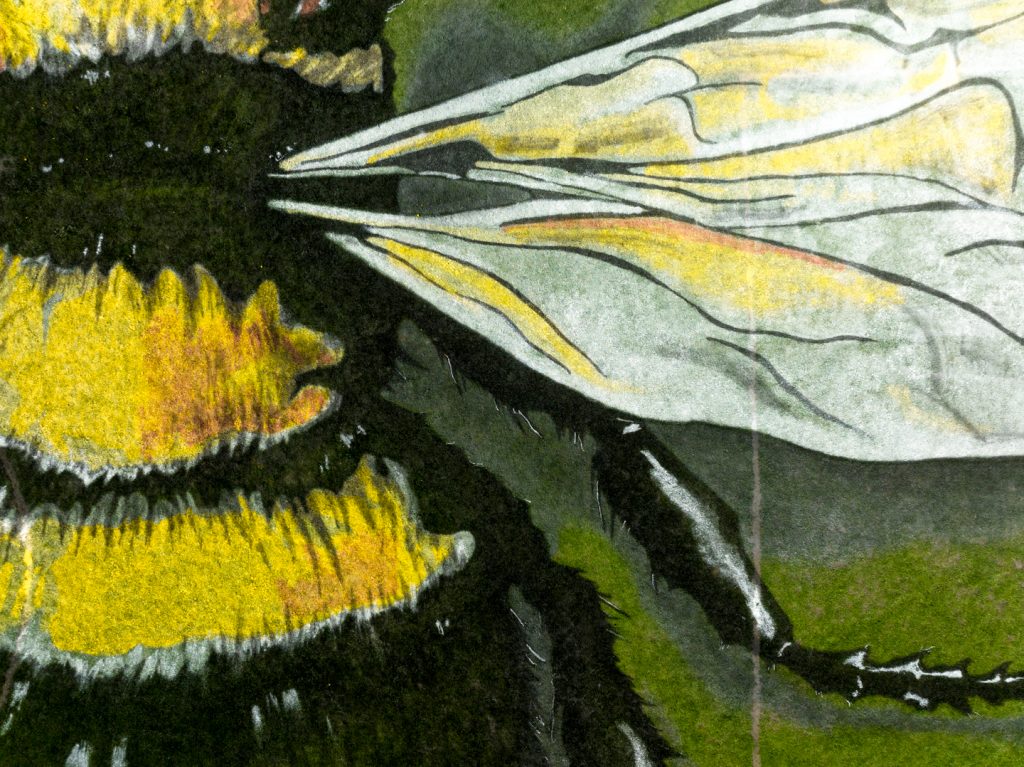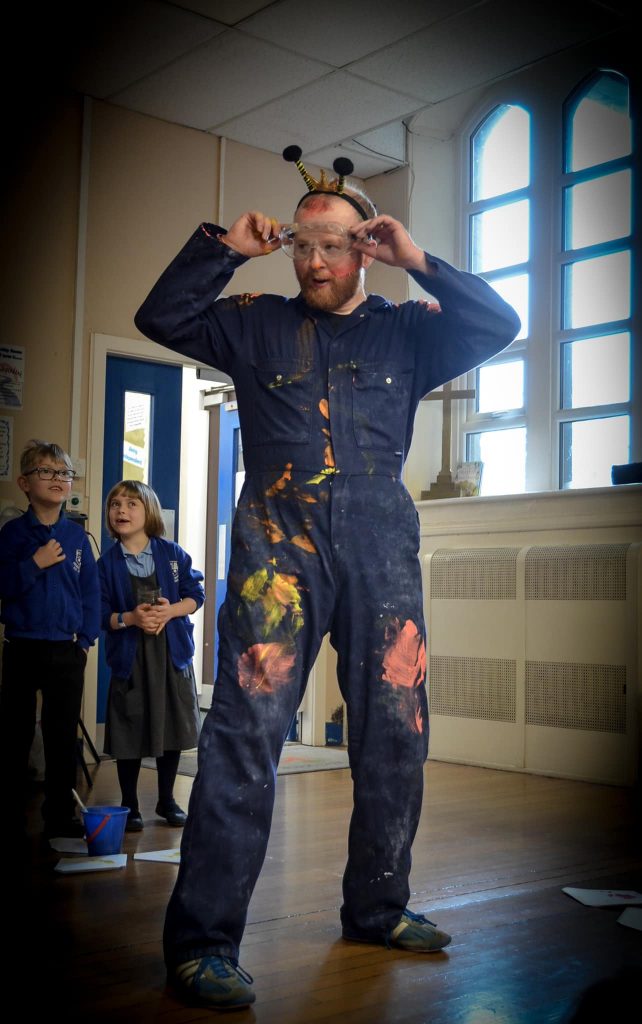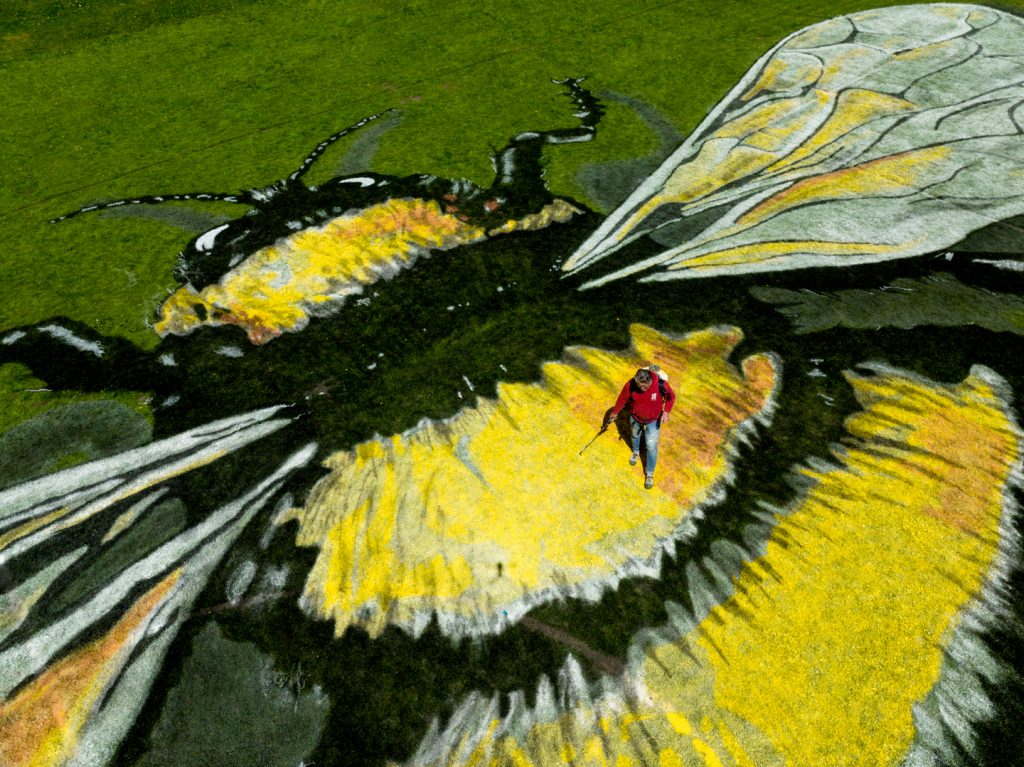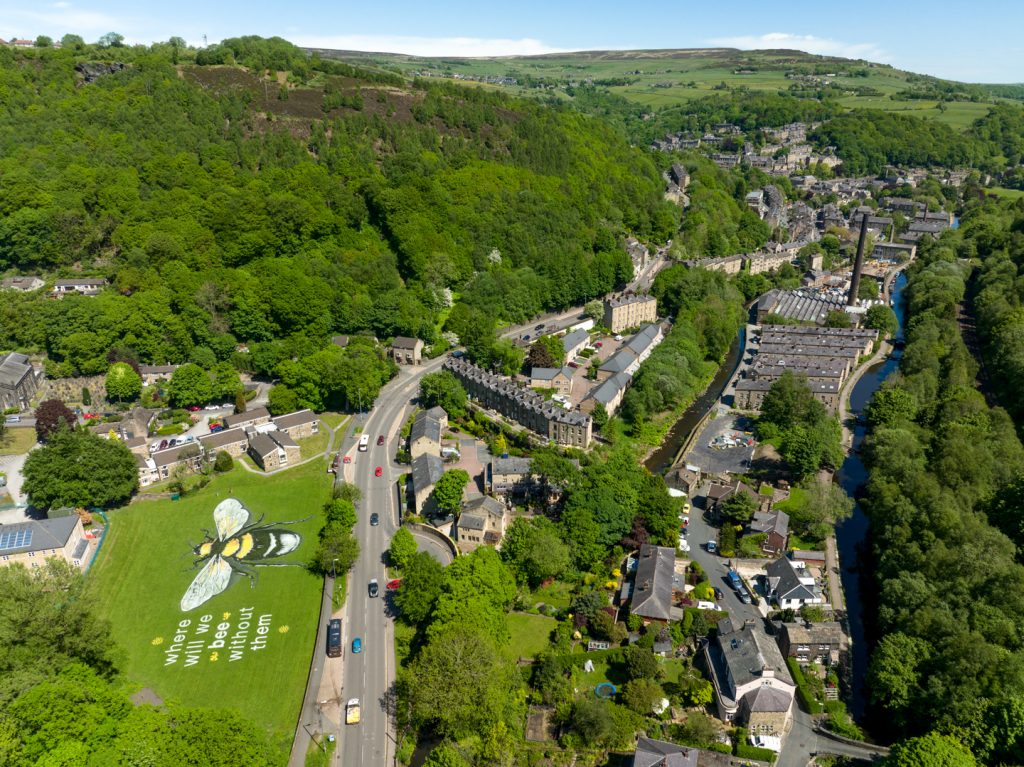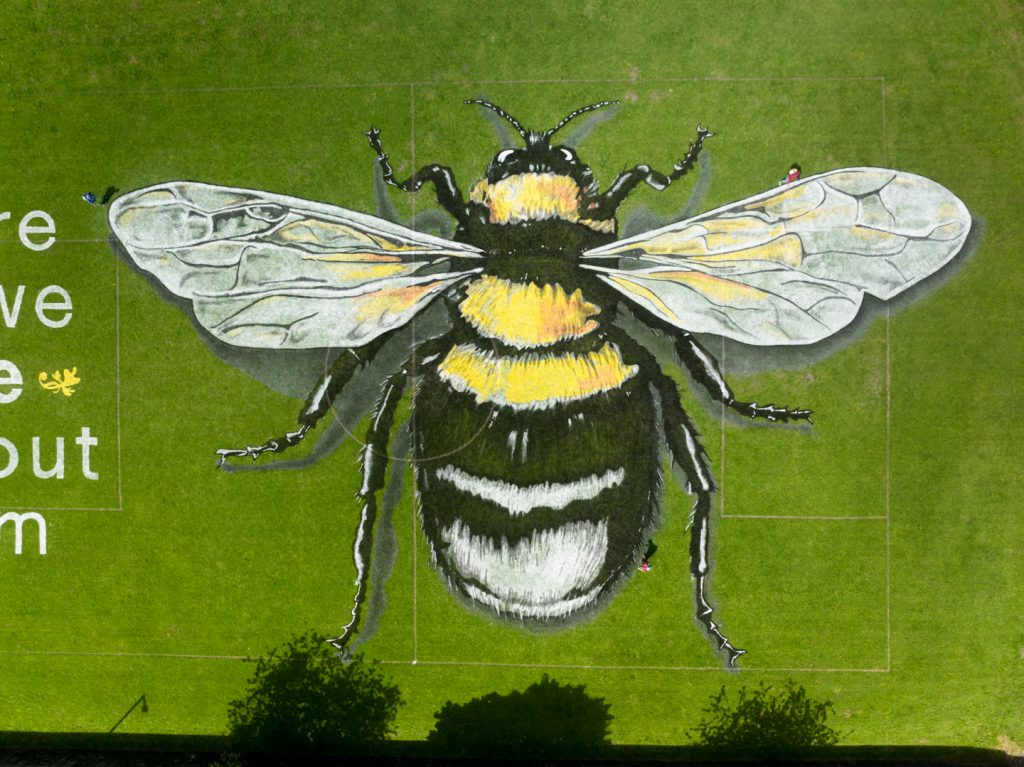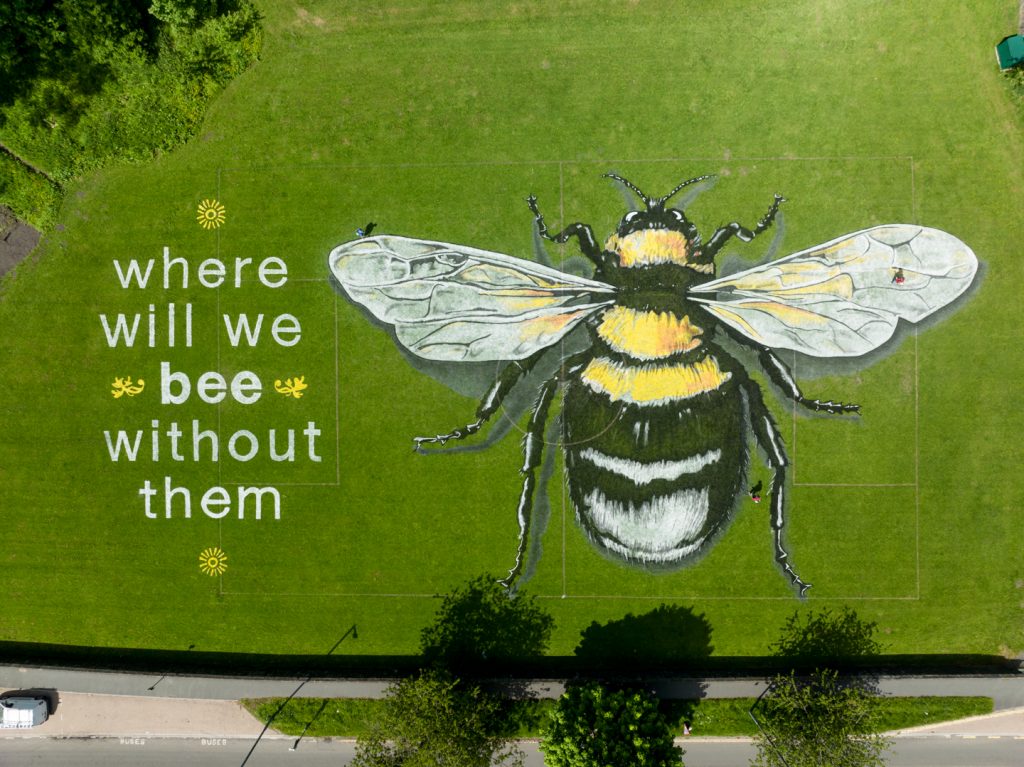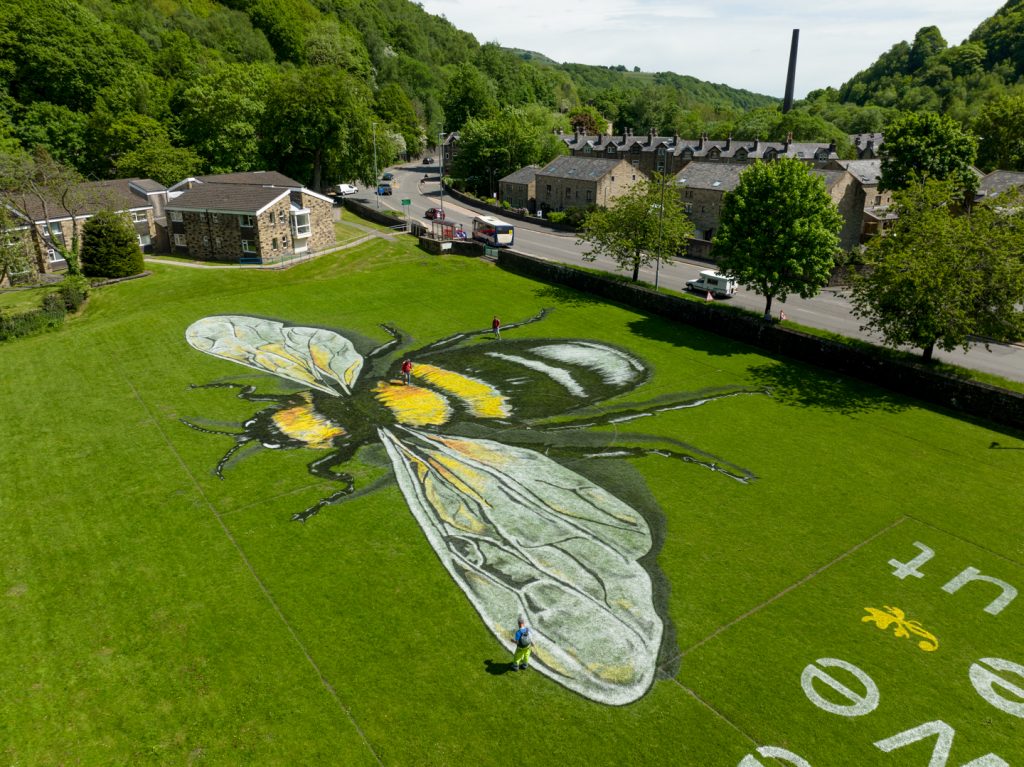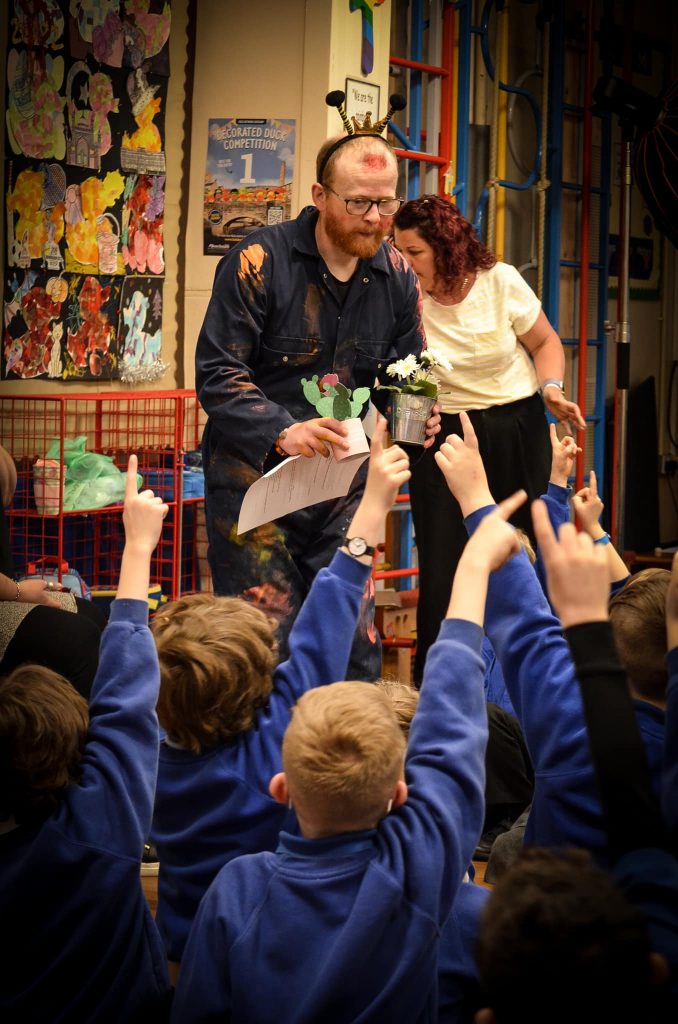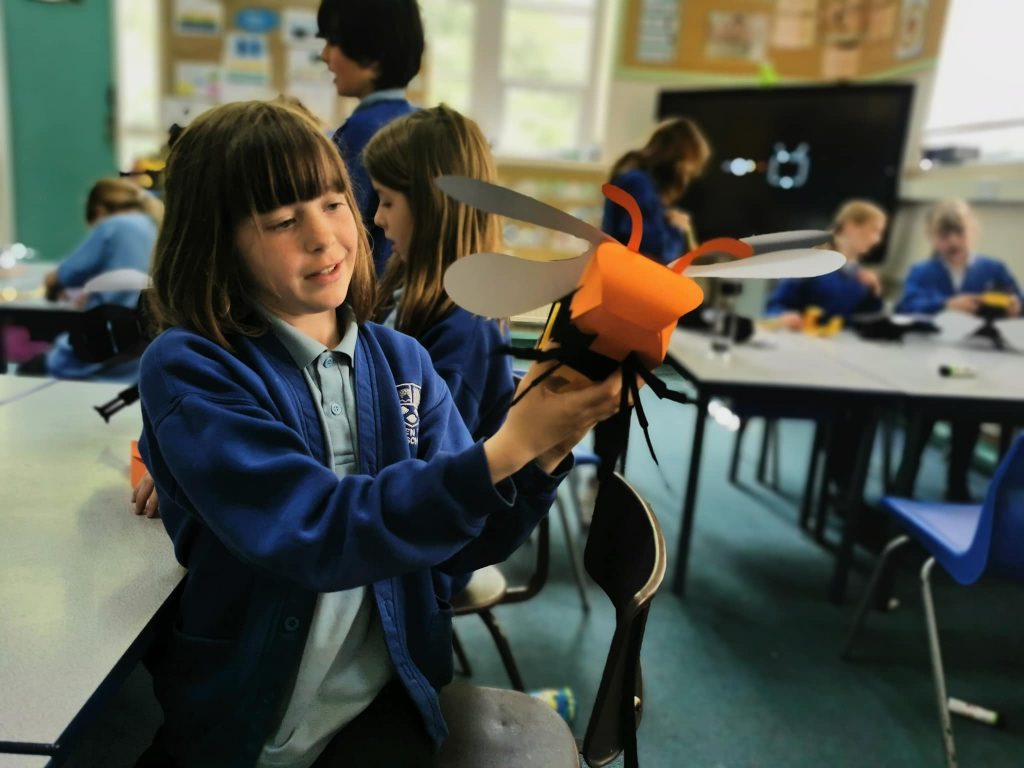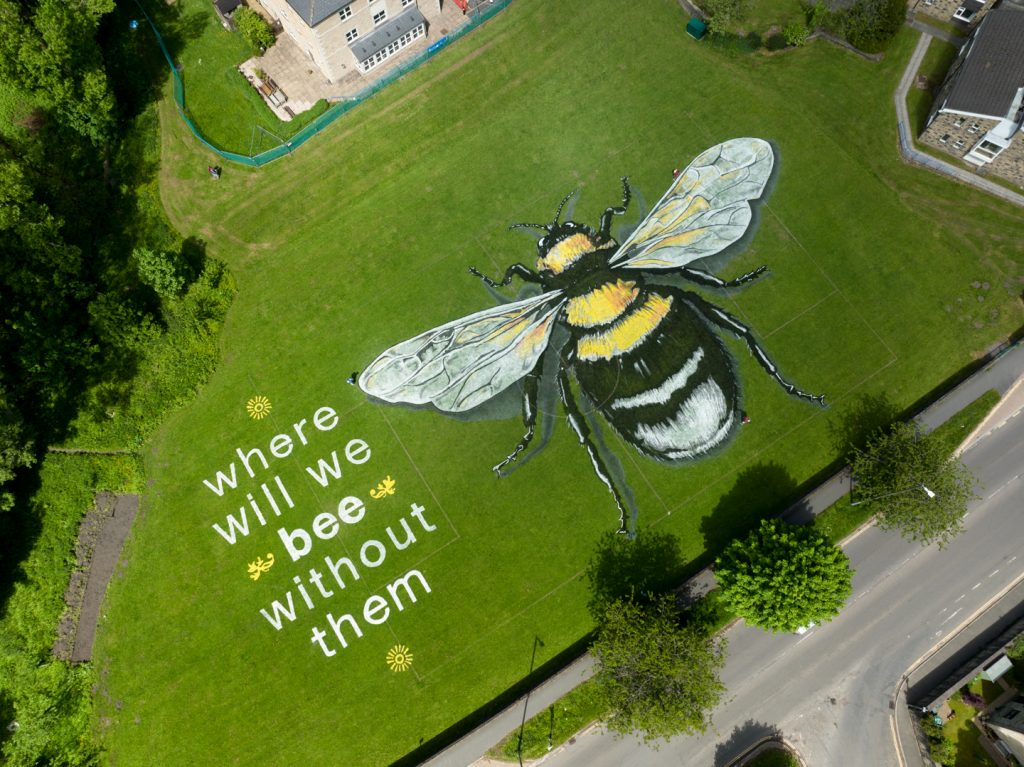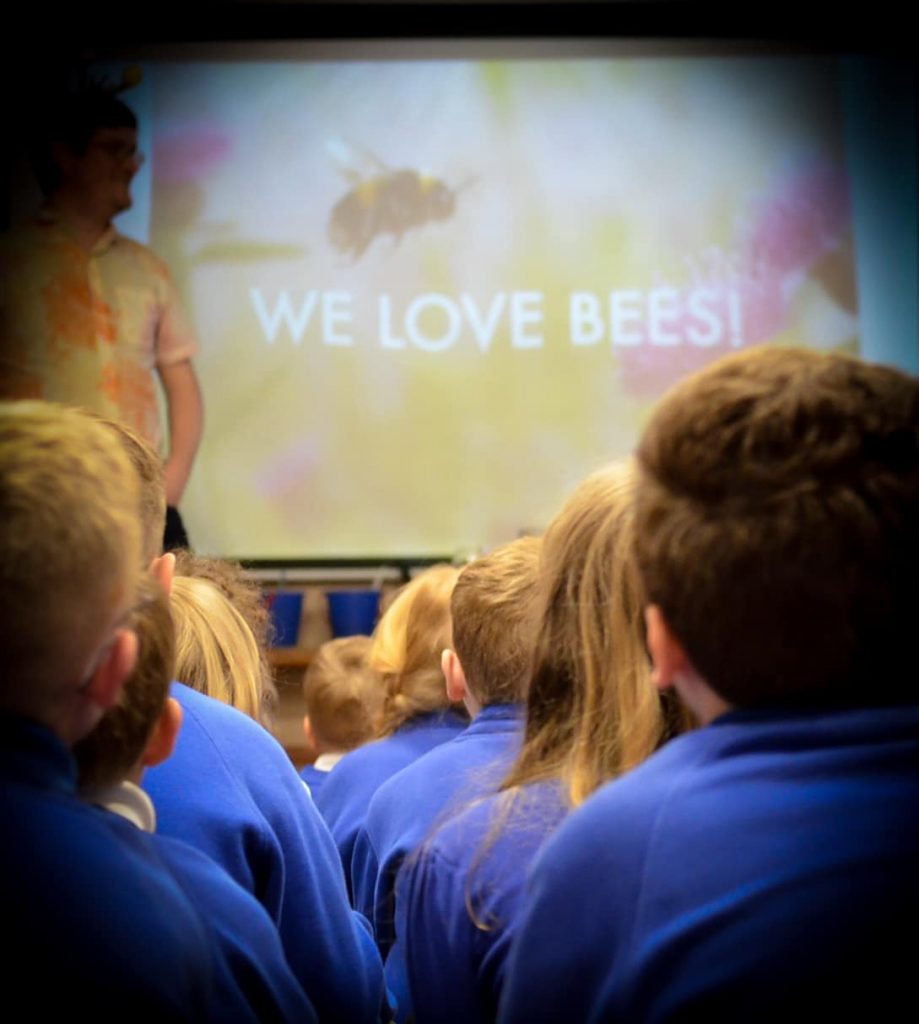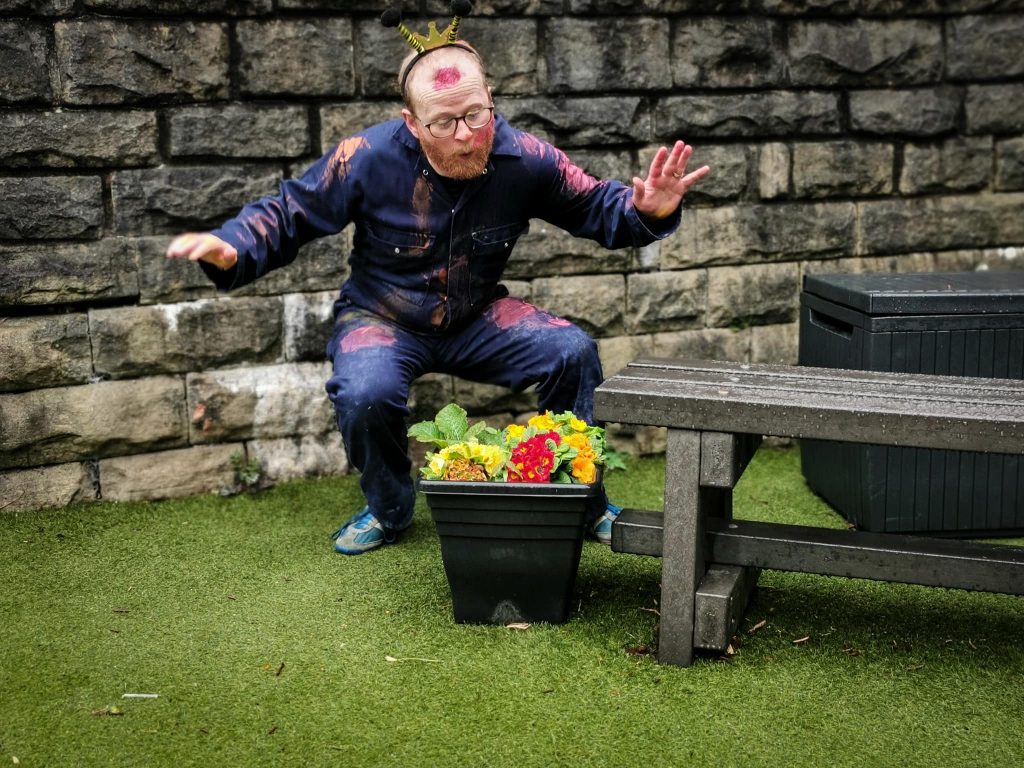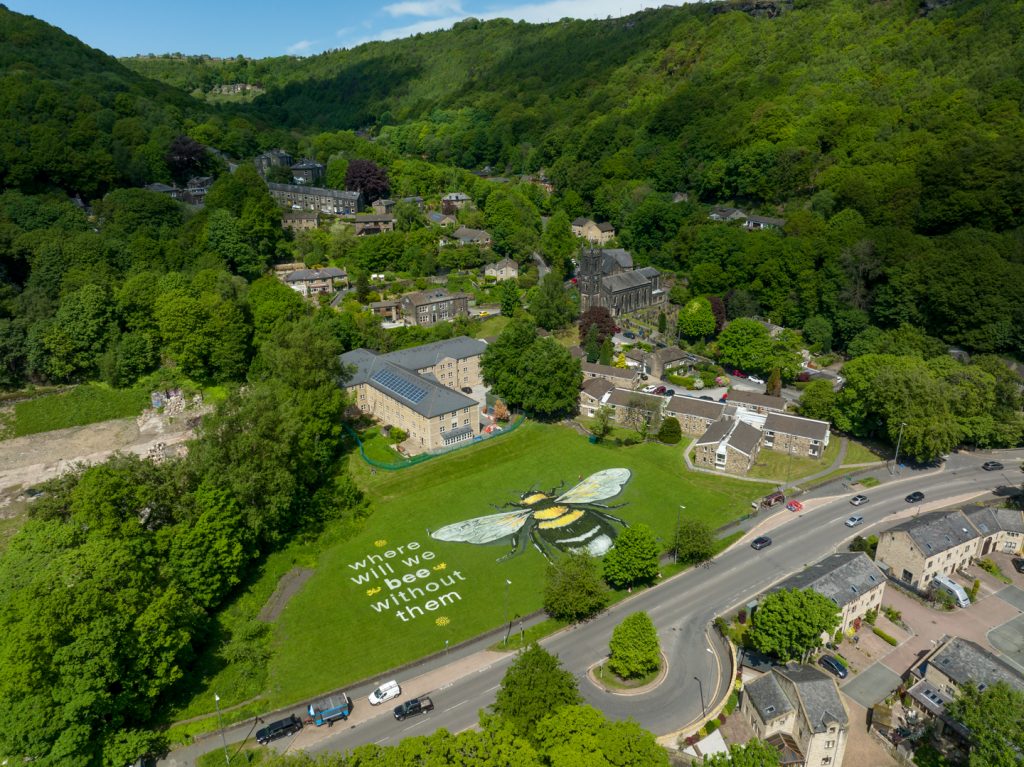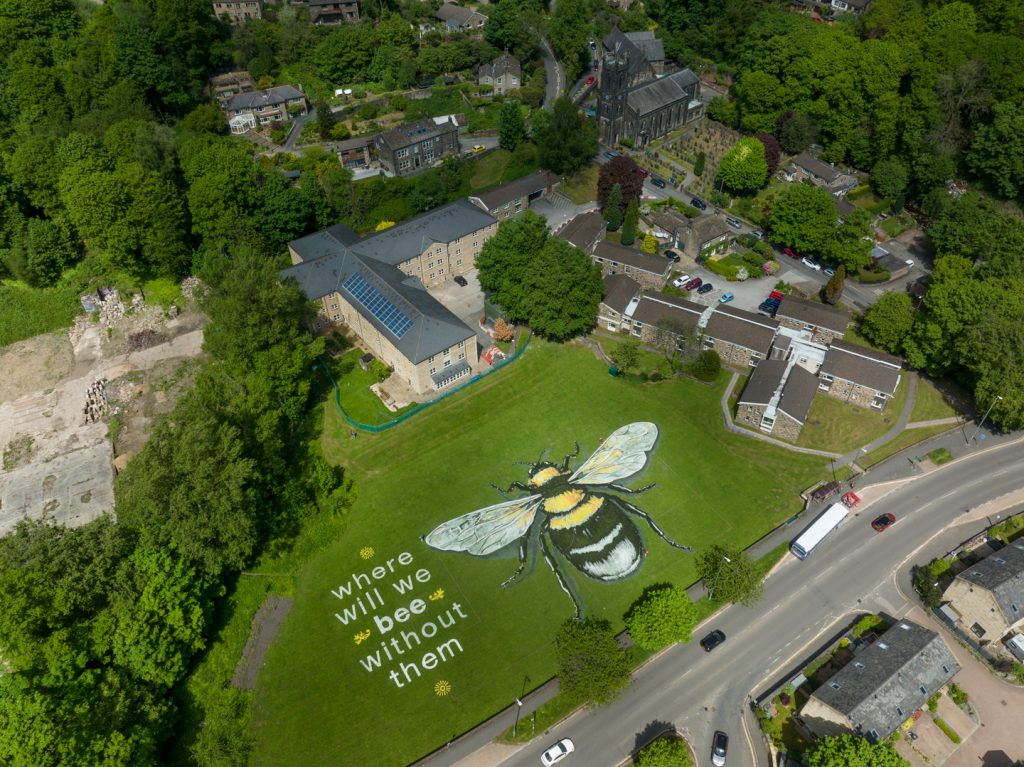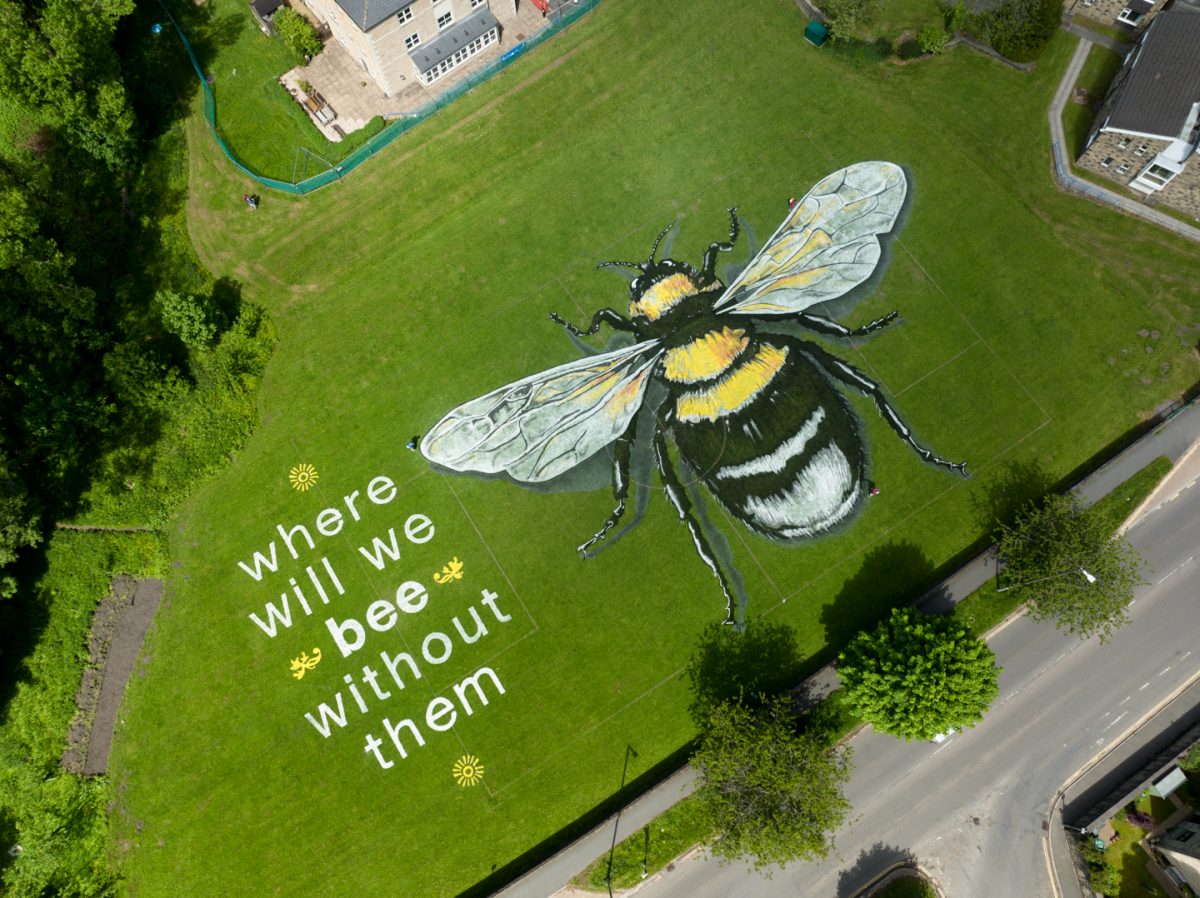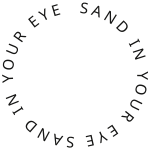We love working locally, especially at Hebden Royd CofE as Jamie and Claire’s daughter attends the school. For the past couple of years we have wanted to develop our land art and push it on a stage further with realism and colour. We also wanted to create some 3D paper sculptures too. Dave joined us about a year ago and his background is paper engineering so we wanted to see where his incredible skills could be used within Sand In Your Eye. (What Dave can create with paper blows our minds!)
Lots of us at Sand In Your Eye love nature, Jamie, Dave and Liz have great knowledge and passion for the UK’s wildlife so they were all enthusiastic to do something to mark World Bee Day. On the 20th May. So that’s where the idea began. We asked the school if they would like to be involved and they were happy to work with us on this. In school they planned sessions around bee conservation and a parent Paul McKnight took on the task of organizing parents to plant a small wild flower meadow that the children would seed on the 20th. The stars were aligned to make this work!
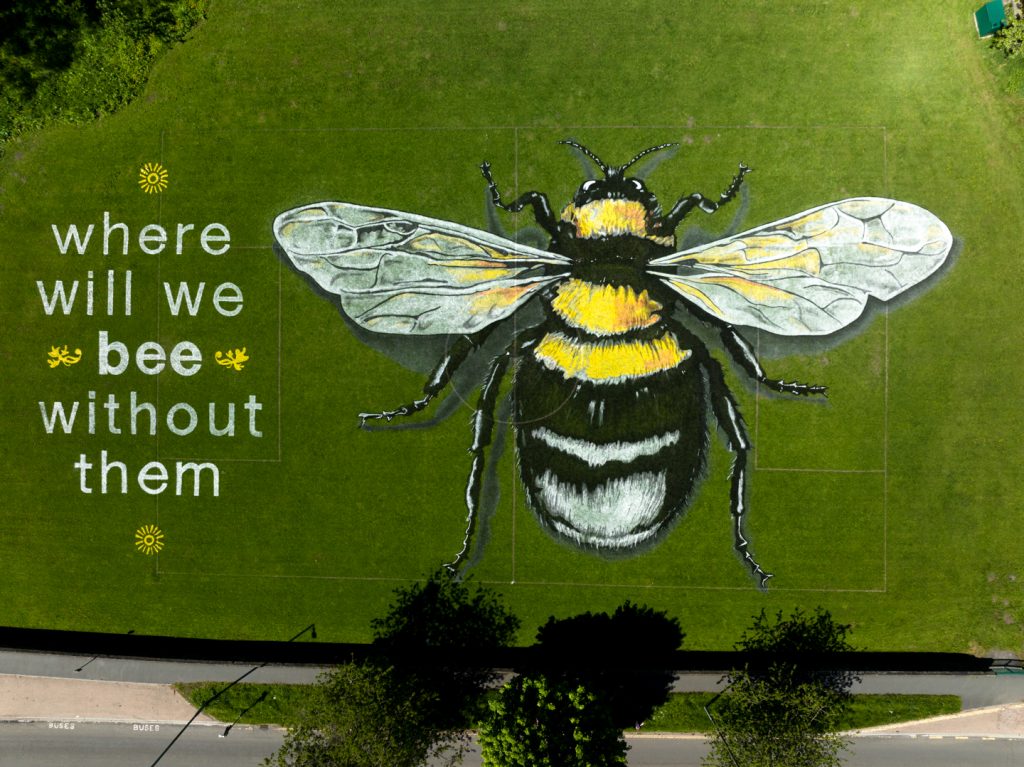
As well as creating the land art, we wanted to engage the children about bees and why they are so important to biodiversity. We wanted to make the projects as fun and engaging as possible. We sent some classroom packs over with games and projects ideas for the classroom and the school had their own too activities surrounding the subject. Jamie and Dave went into the school and led and assembly all about pollination, which ended in the kids covering Jamie the bee in paint (pollen)! Dave and Jocasta then did sessions in the classroom making the 3D paper bee sculptures Dave had designed.
The bee sculptures we created as a flat design, then Dave laser cut all the pieces at The Bridge Rectifier. These pieces were then colour coded to help the children construct them. Dave also make a quick step by step tutorial to go alongside.
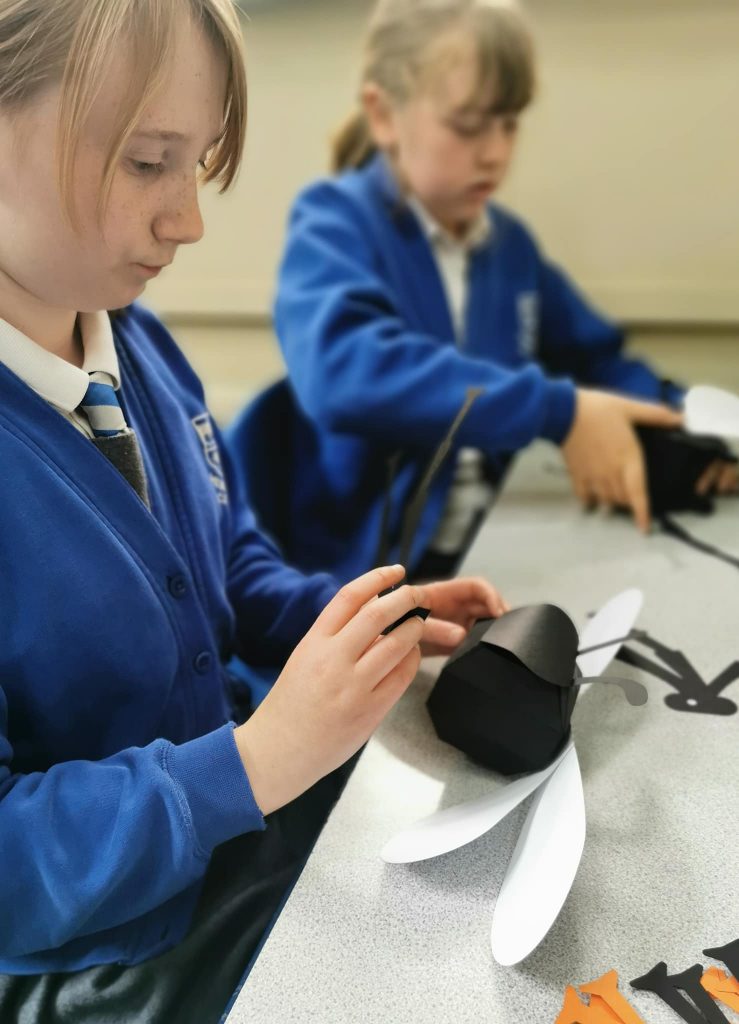
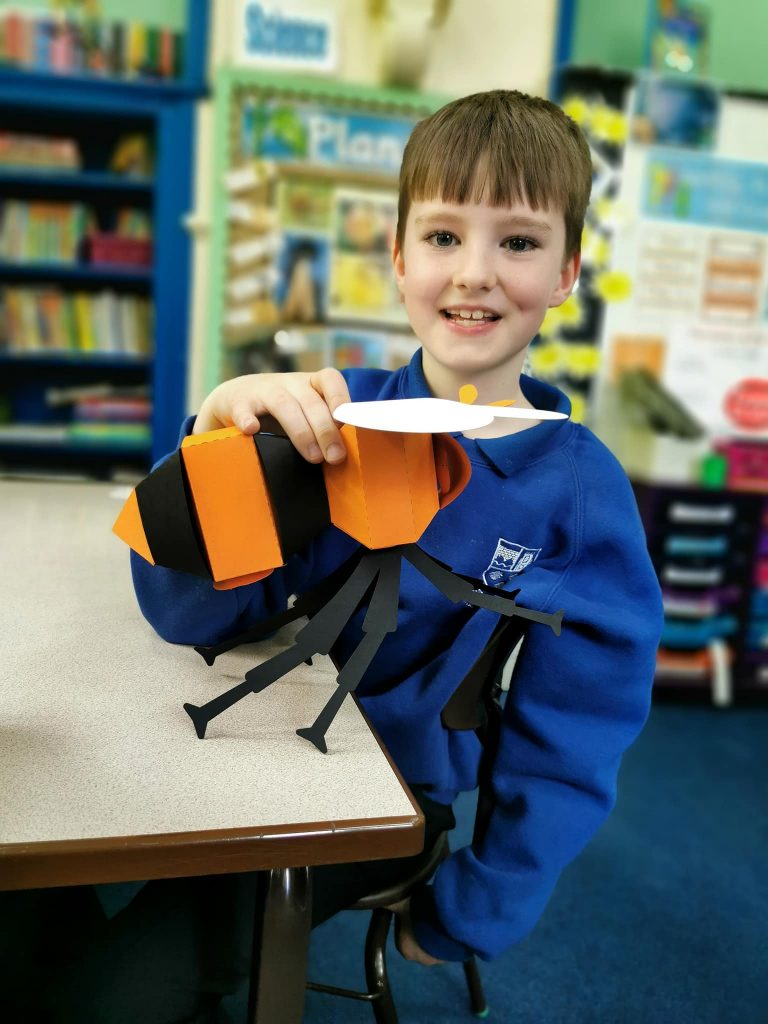
The bee’s were ready, the children we poised for World Bee Day, now all we had to do was make a giant piece of land art! As luck would have it during this time Chris joined our team. Chris is an amazing illustrator and took on the challenge to design the bee! Once the design was ready we started work on the field. Day 1 was a bit of a wash out as you can’t really grass paint in the rain, it just absorbs into the soil. So we regrouped the next day and the sun was shining! The weather held out for the rest of the week so we had a lovely time in the sunshine painting the bee. It was incredible watching the grass painting come together over the week and once the final tones and highlights were in the bee really sprung to life. The land art measured 60 metres and we are really pleased with the result.
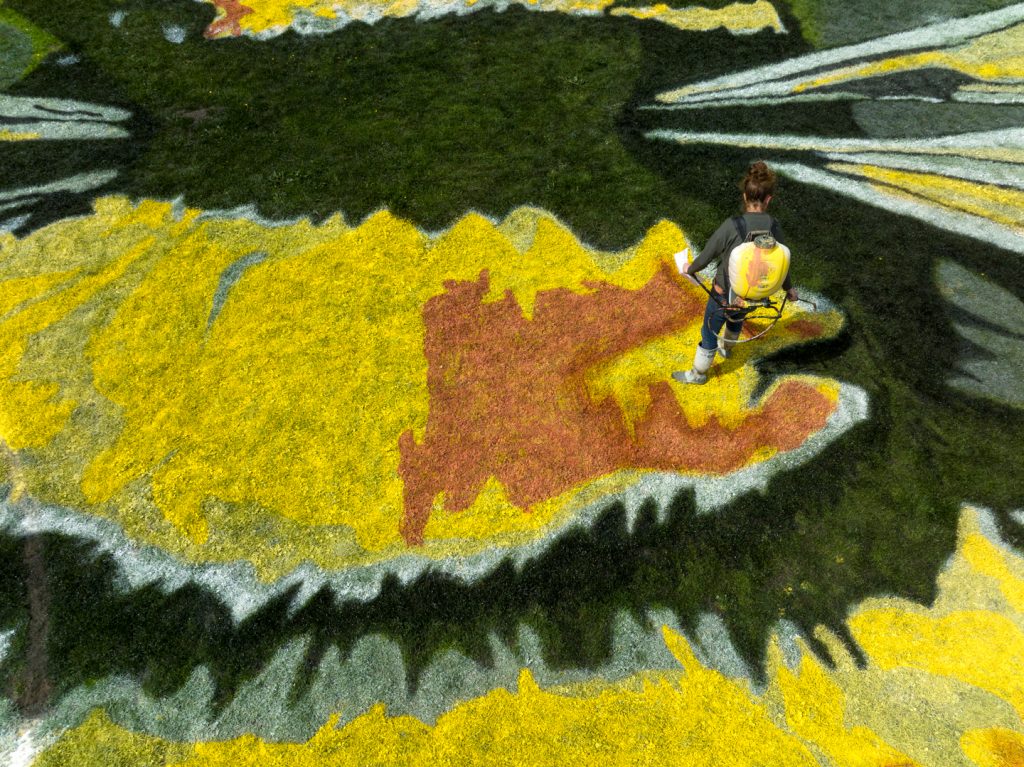
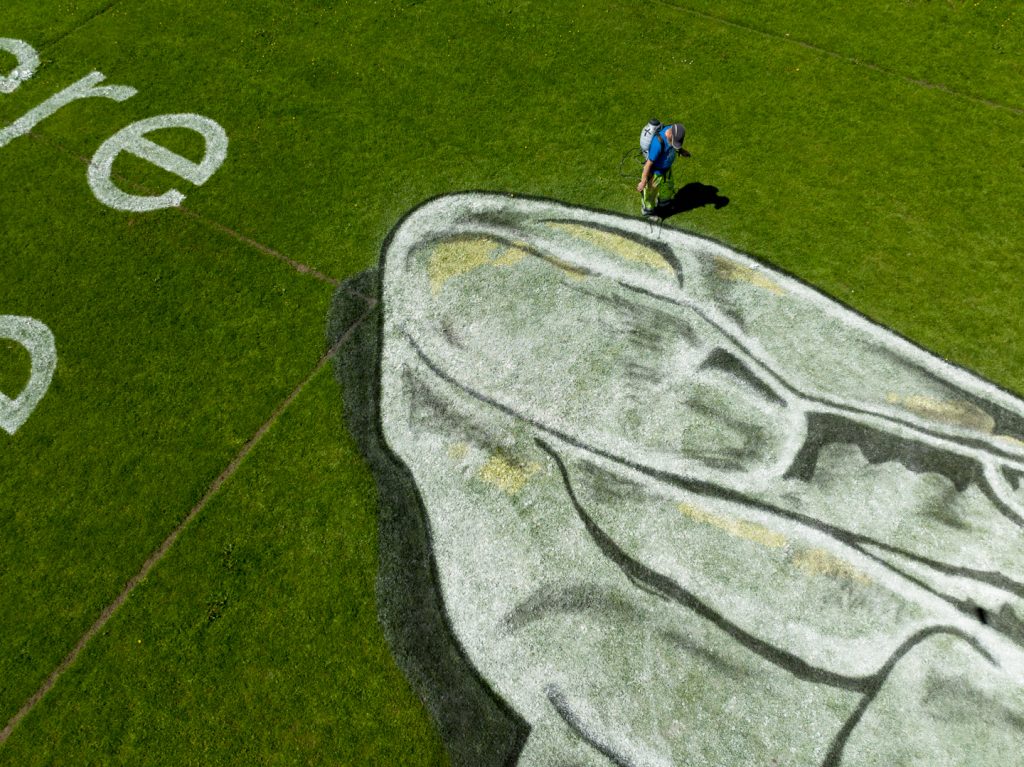
We didn’t have anytime to rest though as the next day was World Bee Day! All the children came to school in their brightest coloured clothes. We had a couple of games planned to a understand pollination and to interact with the land art and the giant cardboard bee Dave had made. The older children came to the school field first so we could teach them the game so they could assist and team up with the younger children. Then the rest of the school joined us and the games began! Jamie did a little introduction to the games.
The first one was to demonstrate a swarm. When flowers and nectar become scare the queen will leave the hive taking her colony with her in a swarm in the hope of finding a new place full of flowers. We demonstrated this with the children running after Daves giant 3D bee who was called Queen Beatrice.
The second dagame was about pollination and how bees communication locations of flowers to each other.
“Can Bees talk?” Jamie asked?
“No!” the children shouted back
“Can Bees point?”
“No!” cried the children again.
“So how do they show each other where the flowers are full of nectar?”
The children had by this stage done lots of activities about Bees and were well versed in the answer. “They do the Wiggle Dance!” When a bee locates some nice flowers it can communicate this to the hive by doing a vigorous wiggle in the direction of the flowers, it is essentially pointing. In the second game the children were divided in to hives, and some children were flowers. The bees then had to go to each of the flowers in a circuit communicating to the next group where the flowers were hidden using a wiggle. They took in turns to do this until they had visited every flower. The children loved buzzing around the field! They also took it in turns to split off into groups to work with parents Paul and Clare to plant wildflowers in what will be a little meadow for the Bees.
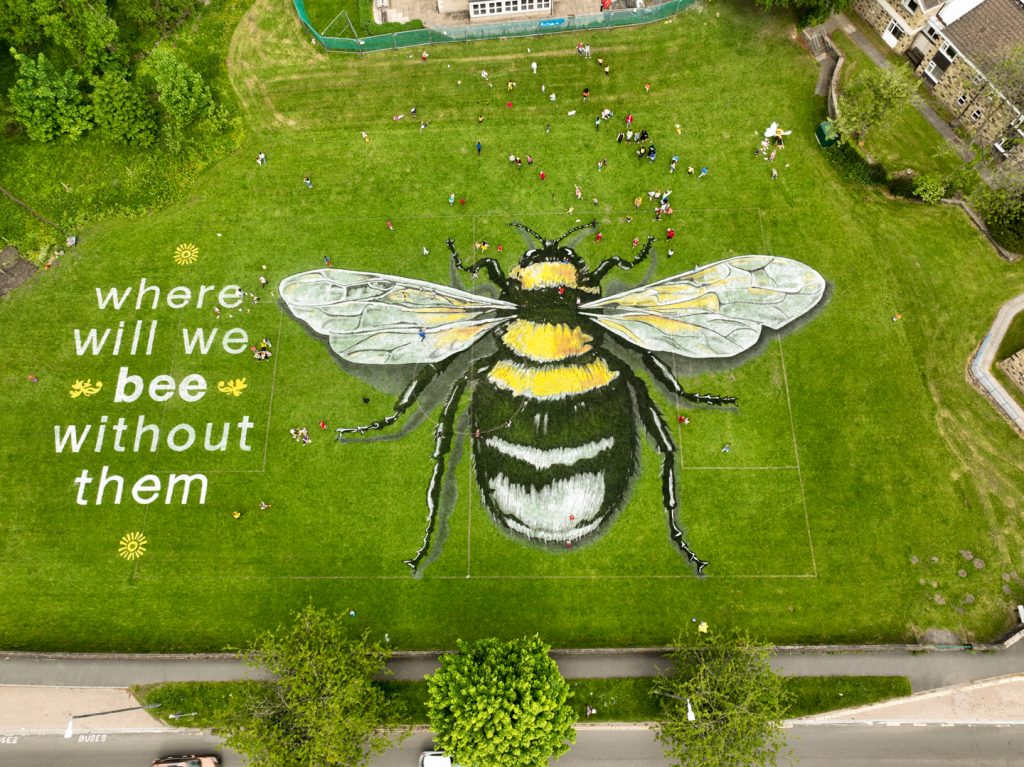
It was a fabulous morning with all the children teachers and even Karen, the vicar for St James Church joining in the fun. It’s great to work with such a great group of children who all enthusiastically got stuck in!
A massive thank you Spray Plant, Grassline and The Bridge Rectifier and Mr Payton the Head Teacher at Hebden Royd for supporting the project.
